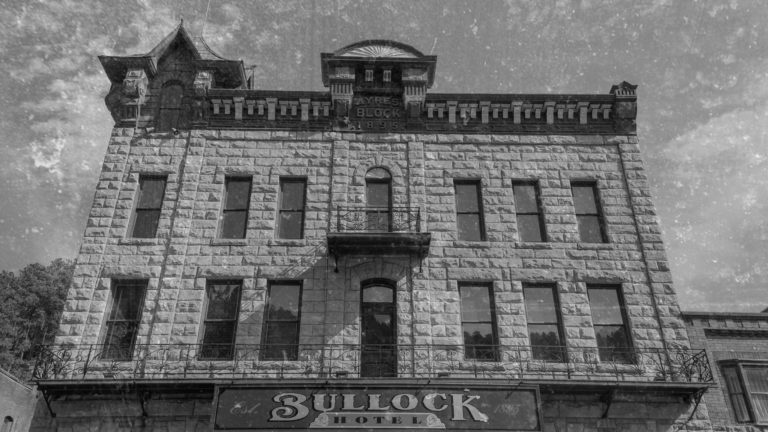Few frontier towns conjure up romantic, rough-and-tumble Old West images like Deadwood. The discovery of gold in French Creek near present-day Custer in 1874 kicked off the Black Hills Gold Rush. While the earliest prospectors concentrated their efforts in the southern Hills, the 1876 discovery of a creek bearing placer gold in a gulch full of dead trees prompted them to move to the northern Black Hills. A new town named Deadwood sprang up almost overnight, attracting a mix of miners, gamblers, gunslingers, and prostitutes. Lawlessness prevailed as Deadwood’s population quickly swelled to 25,000 by the end of 1876. Hastily erected tents and shanties sprang up to house the newcomers, but were gradually replaced by more permanent houses, some of which featured grand stone balconies and brick facades. Saloons, brothels, gaming establishments, and dance halls were built to accommodate the needs of the mostly male population.
Its reputation for murder and mayhem only intensified when Wild Bill Hickok was gunned down in August of that year. Other notorious figures, such as Calamity Jane and Al Swearengen, contributed to Deadwood’s shady reputation. It wasn’t until Seth Bullock, a former sheriff in Montana and aspiring merchant, arrived in Deadwood with partner Sol Star to open a hardware store that the town’s unruliness was brought into check. A public outcry for lawn and order intensified following Wild Bill’s murder, and Bullock was appointed Deadwood’s first sheriff. Bullock was an imposing figure who commanded respect, and after deputizing several residents, the rowdy town settled down and became more civilized. By 1879 Deadwood even had incandescent lighting, becoming one of the first communities in the country to establish electric service.
In 1888, the Deadwood Central Railroad, a narrow-gauge railroad, was established to accommodate miners traveling between Deadwood and Lead, site of the bustling Homestake Mine. Two years later, the Fremont, Elkhorn, and Missouri Valley Railroad arrived in Deadwood, bringing the first standard-gauge railroad track to the Black Hills. Many notable people resided in Deadwood over the years, including E.B. Farnum, George Hearst, A.W. Merrick, Charlie Utter, Wyatt Earp, Potato Creek Johnny, and Dr. Valentine McGillicuddy. Mount Moriah Cemetery serves as the final resting place for a number of Deadwood’s most legendary citizens, including Wild Bill, Calamity Jane, and Seth Bullock.
Deadwood’s ability to thrive was put to the test multiple times over the years. A fire in 1879 tore through the business district, destroying a majority of the wooden structures. The city rebuilt, using brick and stone in place of timber. Deadwood weathered other devastating fires, floods, population declines, and economic hardship but always persevered. Recognizing its extensive and well-preserved collection of 19th-century architecture, the entire town was named a National Historic Landmark in 1961—the only city in America to receive this designation. Interest in bringing legalized gambling to Deadwood as a way of promoting economic recovery intensified during the 1980s, and the South Dakota state legislature passed a resolution in 1989 allowing the return of gambling establishments.
Today, Deadwood is a popular destination for tourists interested not only in gaming, but in the city’s checkered history and its abundance of outdoor recreation opportunities. Old West re-enactments are popular, and Deadwood hosts a number of signature events every year.
Learn More
For more information on attractions and events in Deadwood, visit us here.

